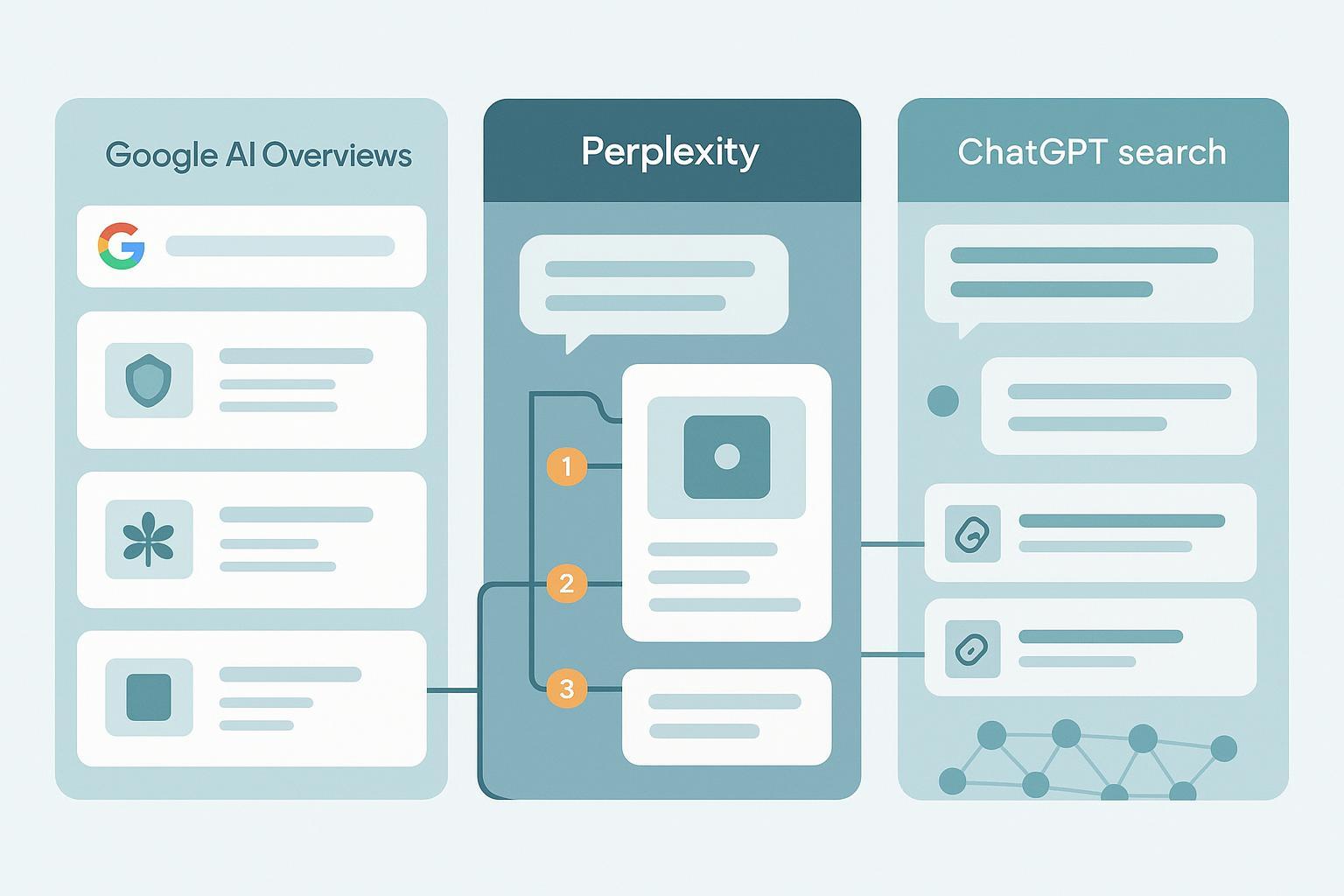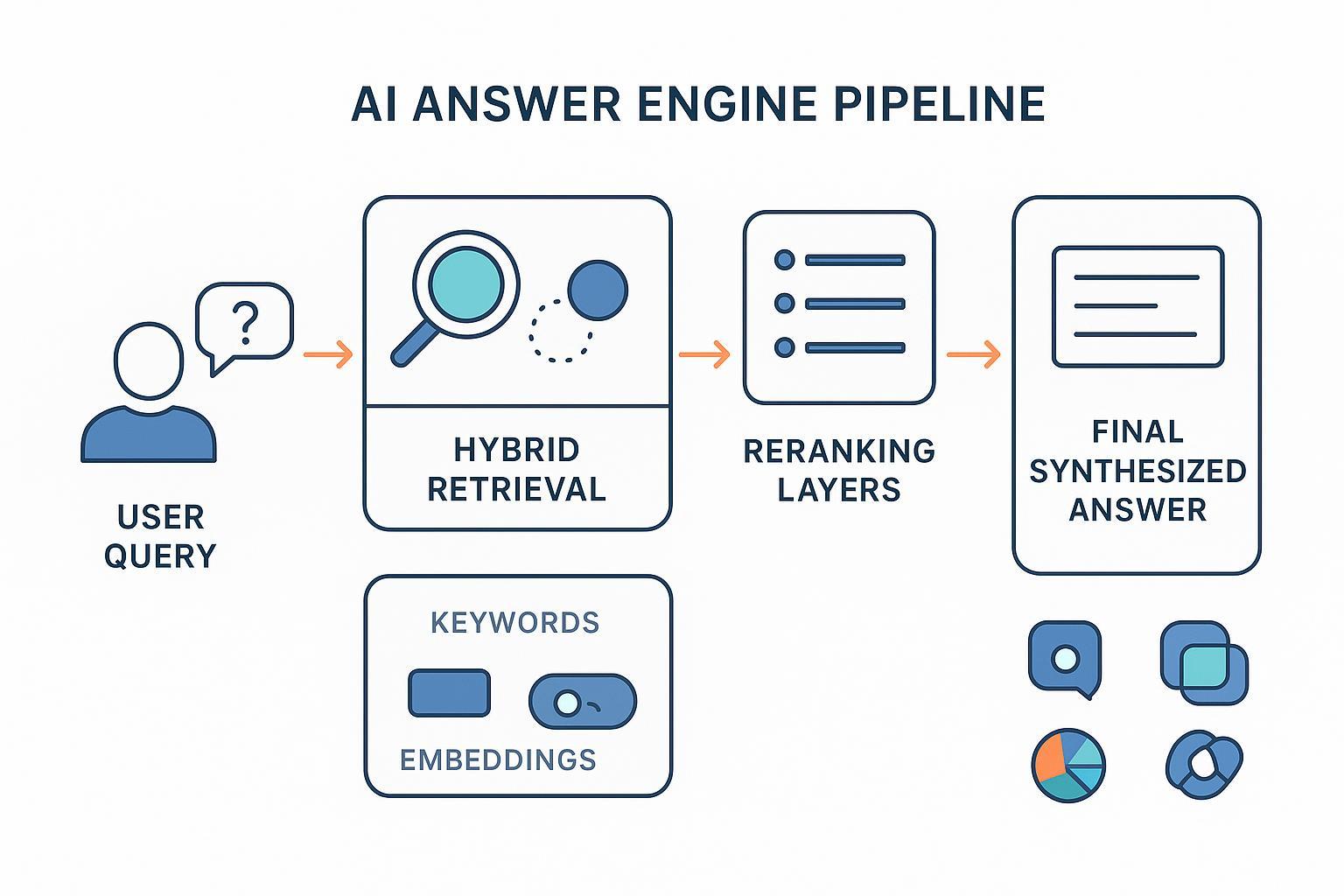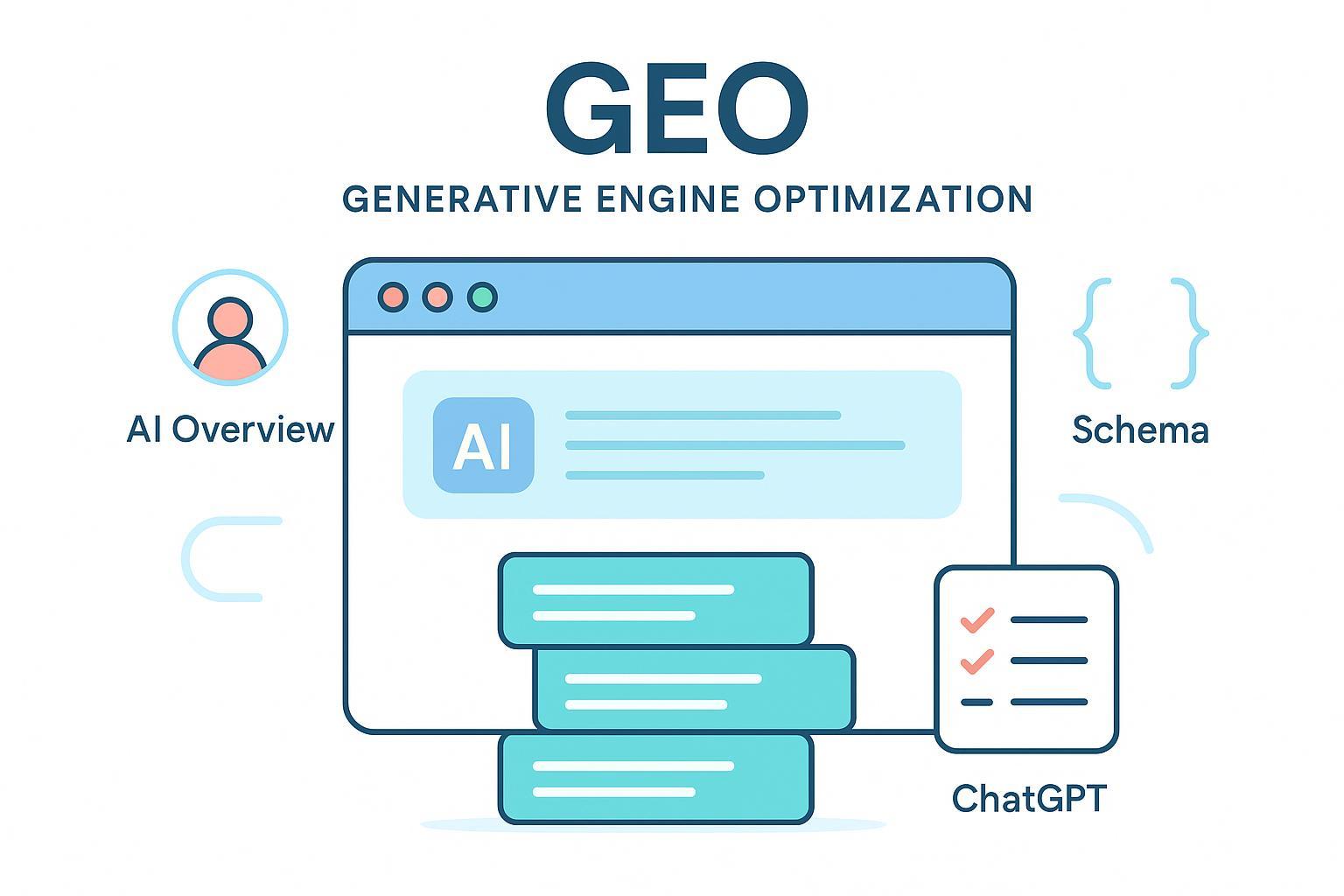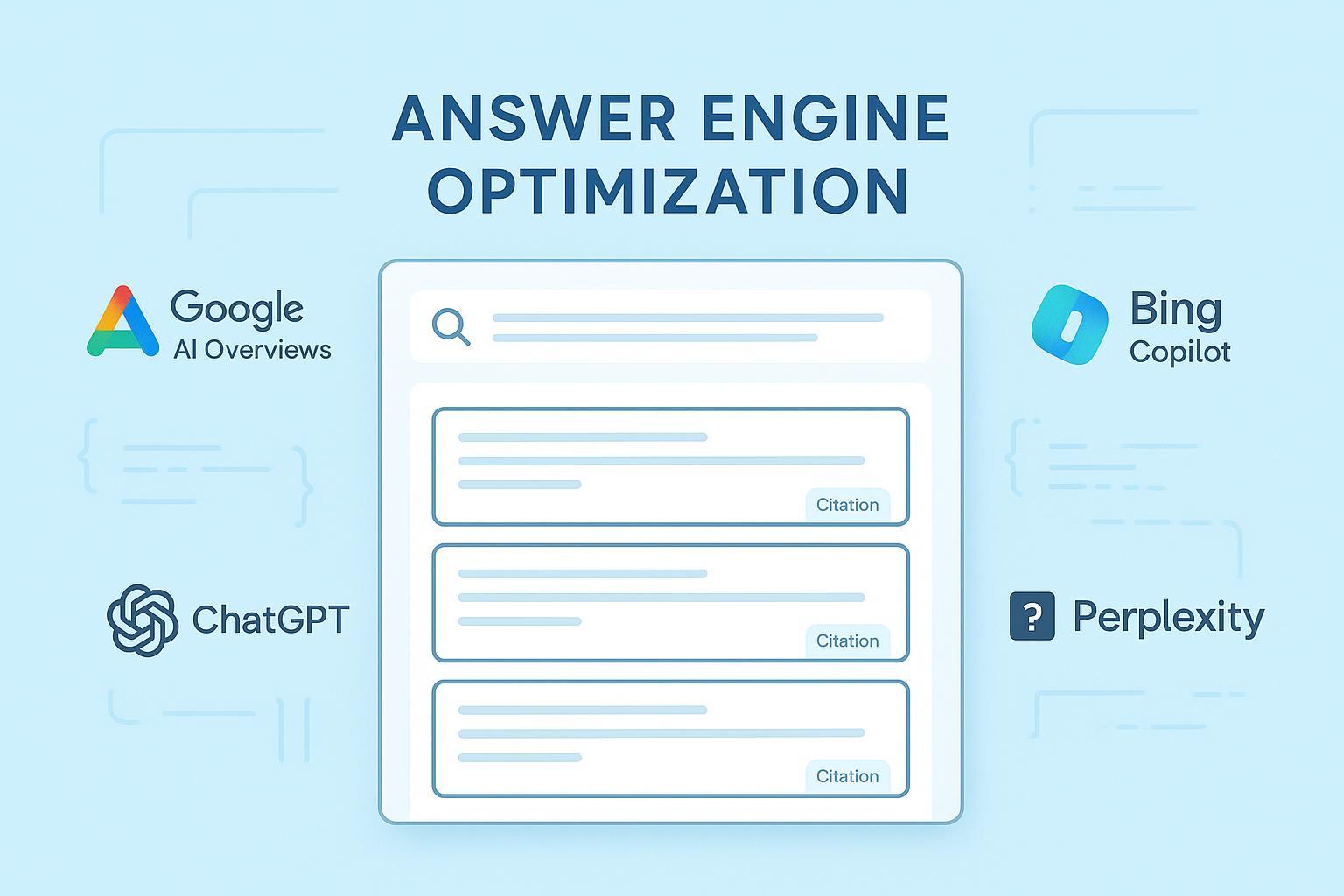Essential GEO Best Practices Every Content Creator Needs in 2025
Discover the top GEO best practices for 2025—actionable workflows, structured data tips, AI citation strategies, and advanced optimization for professional content creators.

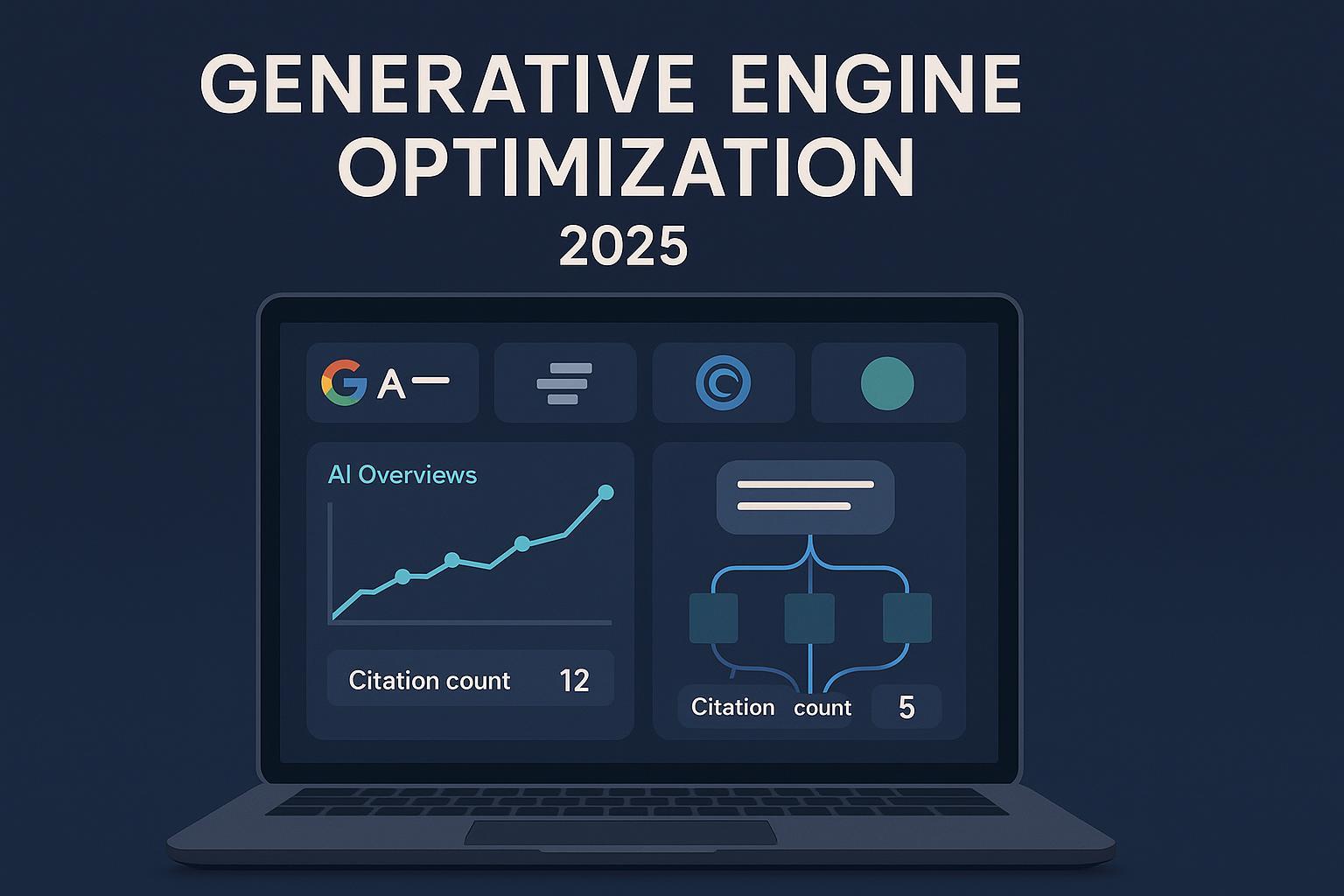
Generative engines now answer, summarize, and cite. In 2025, your content must be optimized not only to rank, but to be selected, summarized, and credited inside engines like Google’s AI Overviews, ChatGPT Search, Perplexity, and Claude. That’s the core of GEO: Generative Engine Optimization. If you’re new to the concept and want a concise primer with definitions and scope, see this short explainer on what Generative Engine Optimization is.
Below is the playbook we use with creators and marketing teams to increase inclusion and citations across the major AI engines—backed by current platform guidance and 2025 benchmarks.
Best Practice 1: Build answer-first modules for every subtopic
Why it works
- Generative engines pick concise, verifiable passages to assemble answers. Google reiterates in its site owner guidance that there’s no special tag for AI Overviews—high-quality, helpful content wins, and AI features link to sources for deeper exploration, as described in the Google Search Central AI features page (2025).
How to do it
- For each H2/H3, add a 50–120 word, plain-language answer paragraph—one idea per paragraph, verifiable facts only.
- Where appropriate, include a short, sourced stat or expert quote and name the source in text.
- Follow with a deeper explanation, examples, and steps.
What to measure
- Inclusion rate of your key pages in AI Overviews (AIO) and other engines’ answers.
- Citation count and referral clicks from AI answers.
Caveats
- Don’t keyword-stuff answer paragraphs; engines down-rank generic filler.
Best Practice 2: Clarify entities and authorship with structured data
Why it works
- LLMs and AI search need clear signals of who wrote what, for whom, and why it’s trustworthy. Structured data helps machines understand entities, not as a “switch,” but as context. See Google’s structured data introduction and its Article markup guidance.
How to do it
- Use JSON-LD for Organization/Person, Article/BlogPosting; include author role, job title, and profile URL.
- Add FAQPage or HowTo only when the page clearly contains that content; match visible copy.
- Validate with Rich Results Test; fix errors and warnings.
What to measure
- Growth in “Enhancements” reports in Search Console; improved engine citation precision for your brand and authors.
Caveats
- Schema is not a cheat code. Google’s May 2025 guidance stresses useful, original content over tricks; see the “Succeeding in AI search” post (Google, 2025).
—
Example tooling in practice
- If you need to monitor whether AI engines actually cite your pages after you implement answer-first modules and structured data, a practical approach is to centralize multi-engine tracking and sentiment analysis. Try setting up monitoring in Geneo. Disclosure: Geneo is our product.
—
Best Practice 3: Write for verification—prove facts and cite primary sources
Why it works
- Engines increasingly prefer sources that support verifiable claims. Clear sourcing lowers the risk of hallucinations and increases your likelihood of being cited in results that show sources.
How to do it
- Prefer primary sources (original data, official docs, standards bodies). Name the publisher and year next to the claim.
- Use concise, descriptive anchor text for links embedded in the sentence—not “here.”
- Publish original data or expert interviews on your own site and a reputable third-party site when possible.
What to measure
- Ratio of pages with at least one authoritative citation; number of third-party mentions.
Caveats
- Avoid paywalls for core explainers; ChatGPT Search and other engines may deprioritize hard-to-access sources.
Best Practice 4: Engineer content for each engine’s selection behavior
Why it works
- Each engine has different inclusion, grounding, and citation patterns. Aligning format and accessibility boosts your odds of selection.
How to do it
- Google AI Overviews
- Ensure freshness and comprehensive coverage; expand related sub-questions on-page. Google’s 2025 guidance emphasizes helpful, unique content; see Google’s “Succeeding in AI search”.
- ChatGPT Search
- Make definitive explainers crawlable, concise, and well-cited. OpenAI confirms inline citations and a Sources button in the ChatGPT Search Help (2025).
- Perplexity
- Factual, concise, comparison-friendly content tends to be cited. Consider its publisher initiatives if applicable; see Perplexity’s Publishers’ Program (2024).
- Claude
- Provide clean, structured documents. Anthropic’s Citations API announcement (2025) highlights Claude’s ability to reference exact passages.
What to measure
- Engine-specific citation share and referrals.
Caveats
- Don’t overfit to one engine; diversify across at least two to three major engines relevant to your audience.
Best Practice 5: Design for skimmability and machine parsing
Why it works
- Generative engines chunk and recombine content. Clear sectioning improves extraction fidelity.
How to do it
- Use descriptive H2/H3s that read like the questions users ask.
- Keep paragraphs short (2–4 sentences) and lists crisp.
- Use semantic HTML elements (article, section, figure, figcaption) for clarity.
What to measure
- Average tokens per section; readability scores; percent of headings that are phrased as questions.
Caveats
- Avoid decorative headings that obscure meaning.
Best Practice 6: Publish topical clusters to earn authority
Why it works
- Engines favor entities that demonstrate consistent, comprehensive coverage of a topic with credible authors.
How to do it
- Map a pillar page and 6–12 supporting cluster articles answering adjacent questions.
- Internally link with entity-focused, descriptive anchors.
- Keep author bios consistent and updated.
What to measure
- Cluster completeness; organic and AI-answers inclusion across the cluster; author page impressions.
Caveats
- Thin clusters without depth don’t help; prioritize quality over volume.
Best Practice 7: Track prevalence and adapt to AI Overviews’ impact
Why it matters in 2025
- The share of queries showing AI Overviews has increased, with measurable effects on click behavior. A March 2025 study analyzing 10M+ keywords reported that about 13.14% of queries triggered AIO in that period, per the Semrush AI Overviews study (2025). Several 2024–2025 cohort analyses also found sizable CTR declines where AIO appears; a 12-month review reported organic CTR down roughly 67.8% when AIO is present, as shown by the RankFuse CTR analysis (2025). Treat ranges directionally; effects vary by intent and SERP makeup.
How to do it
- Track which of your priority queries now show AIO; tag pages accordingly.
- Strengthen answer-first modules and add complementary media (short videos, diagrams) to increase link-worthiness.
- Monitor shifts monthly; invest where AIO cannibalizes clicks and diversify demand capture (email, social, community embeds).
What to measure
- AIO prevalence for your keywords; CTR deltas; referral share from AI answers; assisted conversions.
Caveats
- Not all AIO is harmful; some queries see more satisfied users who still click through for depth.
Best Practice 8: Make accessibility and crawlability non-negotiable
Why it works
- Engines need to access, parse, and attribute your content. Barriers reduce inclusion likelihood.
How to do it
- Keep critical explainers ungated; minimize intrusive interstitials.
- Ensure robots directives allow reputable AI crawlers on canonical resources; verify logs.
- Maintain fast performance and mobile-first design.
What to measure
- Crawl stats; time to first byte (TTFB); cache freshness; log entries from major crawlers.
Caveats
- If you disallow AI crawlers, make sure authoritative summaries exist on partner sites you control.
Best Practice 9: Earn third-party corroboration and community presence
Why it works
- Engines cross-check claims across the open web. Being cited by reputable outlets and active, high-quality communities raises selection odds.
How to do it
- Pitch unique data and frameworks to industry publications and associations.
- Publish practical answers in expert communities where permissible.
- Encourage video and visual explainers; YouTube and community sources are frequently referenced in generative results.
What to measure
- Volume and quality of third-party mentions; diversity of referring domains; community engagement metrics.
Caveats
- Avoid low-quality link schemes; they reduce trust and can harm inclusion.
Best Practice 10: Establish a monitoring and iteration cadence
Why it works
- GEO is not set-and-forget. Engines evolve quickly; your workflows must adapt.
Weekly checklist
- Track: new citations, lost citations, sentiment shifts, and engine-specific inclusion.
- Review: pages with declining inclusion; compare against recent algorithm notes and guidance.
- Act: refresh outdated stats; tighten answer paragraphs; add or refine schema; secure corroborating mentions.
Monthly/quarterly
- Re-audit top clusters; expand where coverage gaps appear.
- Compare engine referral mix with your traffic and lead quality.
- Revisit priority queries showing AIO; re-balance investment between content depth and channel diversification.
What to measure
- Citation count, inclusion rate per engine, sentiment score trend, and conversion contribution.
Caveats
- Don’t chase every fluctuation. Prioritize durable improvements and trustworthy sources.
Engine-specific playbooks at a glance
-
- Content quality and utility first; expand breadth around the core query; keep facts current. See Google’s latest owner guidance in “Succeeding in AI search” (2025) and the broader AI features documentation.
-
ChatGPT Search
- Make key pages definitive, skimmable, and rich with primary citations. OpenAI details citation behavior in the ChatGPT Search Help (2025).
-
Perplexity
- Concise, factual content with clear comparisons tends to be cited. Publishers may consider the Publishers’ Program (2024) for advanced integrations.
-
Claude
- Provide clean, structured knowledge assets (HTML/PDF). Claude’s Citations API (2025) facilitates precise, passage-level attribution.
Defensive GEO: Reputation and misinformation response
- Set alerts for negative or incorrect mentions; triage by severity and reach.
- Publish clarifications on canonical pages and notify partner publications if a misquote originated there.
- Ensure consistent facts across your site, profiles, and data sources; keep author bios and organization details up to date.
- Maintain accessibility to authoritative pages so engines can correct themselves on subsequent crawls.
Extend your practice with focused resources
If you prefer to deepen the concepts rather than extend this article, a compact explainer on what Generative Engine Optimization entails in 2025 can help align your team on fundamentals. For applied patterns, these cross-industry examples show how teams operationalize clusters, answer-first modules, and monitoring cadences: see the 2025 AI search strategy case studies.
Putting it all together
In 2025, GEO success comes from a repeatable loop:
- Design answer-first, verifiable content with clear entities; 2) Format for skimmability and machine parsing; 3) Align with engine-specific behaviors; 4) Earn third‑party corroboration; 5) Monitor citations, sentiment, and inclusion; 6) Iterate based on fresh evidence.
If you want one system to keep an eye on how your brand shows up across ChatGPT, Perplexity, Google AI Overviews, and more, consider centralizing that monitoring in Geneo so you can see citations, sentiment, and historical changes in one place. Disclosure: Geneo is our product.


